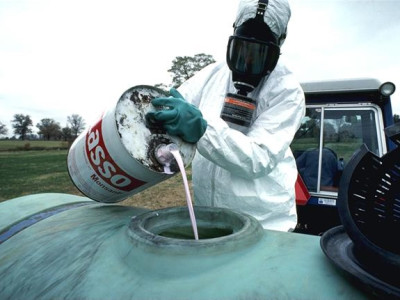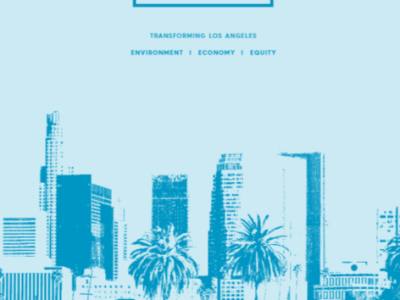Health
The Ninth Circuit Takes EPA to Task (Twice)
EPA’s pesticide registration efforts trigger forceful response
Judge McKeown of the 9th Circuit Court of Appeals recently wrote of the EPA, “Although filibustering may be a venerable tradition in the United States Senate, it is frowned upon in administrative agencies tasked with protecting human health.” Yikes. What did the EPA do to elicit such a reaction from a federal judge? The short …
Continue reading “The Ninth Circuit Takes EPA to Task (Twice)”
CONTINUE READINGDuPont Found Liable In First of 3,500 Lawsuits
Chemical Used in Teflon Linked to Numerous Health Problems, but its Use is Still Legal Under TSCA
Yesterday, a jury in the Southern District of Ohio found DuPont liable for a woman’s kidney cancer in the first of 3,500 suits the company faces. The cases all stem from DuPont’s use and disposal of perflourooctanoic acid (PFOA) or C8. The chemical is used to make Teflon, among other things, and the most recent …
Continue reading “DuPont Found Liable In First of 3,500 Lawsuits”
CONTINUE READINGLost in the Ozone Again
The Ozone Standard, Regulatory Pragmatism, and the Rule of Law
EPA issued a new regulation last week that mandates a reduction in ozone levels to 70 ppm from the current 75 ppm (originally set by the Bush Administration). The new regulation was immediately attacked by industry and environmentalists. According to industry, the regulation will be a job-killing burden on the economy. According to environmentalists, …
Continue reading “Lost in the Ozone Again”
CONTINUE READINGVolkswagen
What Does That Name Mean Now?
Stunning. But not shocking. That was my reaction to the massive fraud admitted by Volkswagen recently. Stunning in its sheer size and reach; half a million cars in the United States and another ten and a half million globally. Yet not very surprising given the fact that use of mechanical and digital cheat devices has …
CONTINUE READINGLos Angeles Releases First-Ever Urban Sustainability “pLAn”
Envisioning greener energy, cleaner air, and reduced consumption in LA by 2035
Perhaps no metropolis is better positioned than Los Angeles to pioneer ground-breaking environmental initiatives. As the second-largest U.S. city, and with the country’s largest municipally owned utility, a world-class research university–UCLA, and the blessings of abundant sunshine and a temperate Mediterranean climate, Los Angeles could serve as a global model for urban sustainability. Today, the …
Continue reading “Los Angeles Releases First-Ever Urban Sustainability “pLAn””
CONTINUE READINGThe Unreasonable Risk of TSCA Reform
Caught Between a Rock and a Hard Place
The Frank R. Lautenberg Chemical Safety for the 21st Century Act is no doubt generating significant conflict, including claims of undue industry influence, competing bills from prominent members of the same party, consternation among states, and divisions among health and environmental groups. And it may also be the closest we have gotten to TSCA reform—ever. …
Continue reading “The Unreasonable Risk of TSCA Reform”
CONTINUE READINGThe Climate-Nutrition Nexus
The advisory panel on nutrition ruffled some congressional feathers by taking environmental impacts into account. The panel’s report concludes that “a dietary pattern that is higher in plant-based foods, such as vegetables, fruits, whole grains, legumes, nuts, and seeds, and lower in animal-based foods is more health promoting and is associated with lesser environmental impact than is …
Continue reading “The Climate-Nutrition Nexus”
CONTINUE READINGA Link Between Climate Denial and Autism? Inquiring Minds Want to Know!
You too can be a denialism/autism truther.
Let’s start by being candid and admitting that the jury is still out on this one. Still, there are reasons for concern about the possibility that climate denial can be associated with autism.Anyone who says this is false is just being dogmatic. We should at least openly acknowledge the existence of scientific uncertainty. Just consider …
Continue reading “A Link Between Climate Denial and Autism? Inquiring Minds Want to Know!”
CONTINUE READINGThe Dietary Supplement Scandal
There are 65,000 dietary supplements on the market, and almost half the population uses at least one of them. Americans spent $13 billion on dietary supplements last year, according to the Washington Post. There are disturbing indications that nearly all that money is wasted — or to put it more bluntly, that the industry is essentially …
Continue reading “The Dietary Supplement Scandal”
CONTINUE READINGFood Policy: A Reply to Dan Farber
Earlier this week on this blog, Dan Farber made the excellent point that although the average American is neither malnourished nor obese, both persist as significant problems revealing deep failures in our food system. But his juxtaposition of statistics regarding obesity with those regarding malnourishment reflects a common misunderstanding of malnourishment, which is often equated with …
Continue reading “Food Policy: A Reply to Dan Farber”
CONTINUE READING










